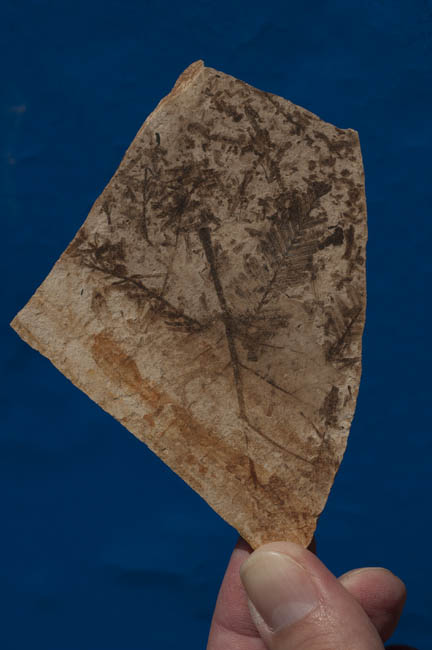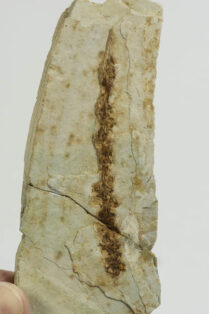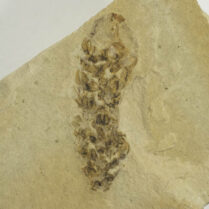Description
Metasequoia occidentalis
Oligocene
John Day Formation
Fossil High School, Fossil, Oregon, USA
Very good 1.2 inch frond on shale.
Leaf,
Metasequoia is a genus of conifer that appeared during the early part of the Late Cretaceous (Cenomanian age). It survived the K/T extinction and thrived in North America during the Paleocene and Eocene. It ranged as far north as Ellesmere Island, indicating a wet, mild climate even in northernmost Canada at the time. However, climates began trending drier, and cooler by the Late Eocene.
Metasequoia died out in North America by the end of the Miocene and was considered extinct worldwide until it was discovered alive in China in the 1940’s. Since then, it has been successfully re-introduced into North America.
M. occidentalis has been considered by some paleobotanists to be indistinguishable from the modern dawn redwood, M. glyptostroboides.





